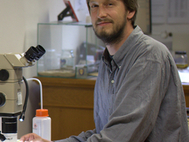
Surprisingly high genetic divergence within Central European woodlice species
DNA barcoding has become the most popular approach for species identification in recent years. As part of the German Barcode of Life project, the first DNA barcode library for terrestrial and freshwater isopods from Germany is presented. The analyzed barcode library included 38 terrestrial (78% of the documented species of Germany) and five freshwater (63%) species. A total of 513 new barcodes was generated and 518 DNA barcodes were analyzed. This analysis revealed surprisingly high intraspecific genetic distances for numerous species, with a maximum of 29.4% for Platyarthrus hoffmannseggii Brandt, 1833. The number of BINs per species ranged from one (32 species, 68%) to a maximum of six for Trachelipus rathkii (Brandt, 1833). In spite of such high intraspecific variability, interspecific distances with values between 12.6% and 29.8% allowed a valid species assignment of all analyzed isopods. The observed high intraspecific distances presumably result from phylogeographic events, Wolbachia infections, atypical mitochondrial DNAs, heteroplasmy, or various combinations of these factors. Our study represents the first step in generating an extensive reference library of DNA barcodes for terrestrial and freshwater isopods for future molecular biodiversity assessment studies.






